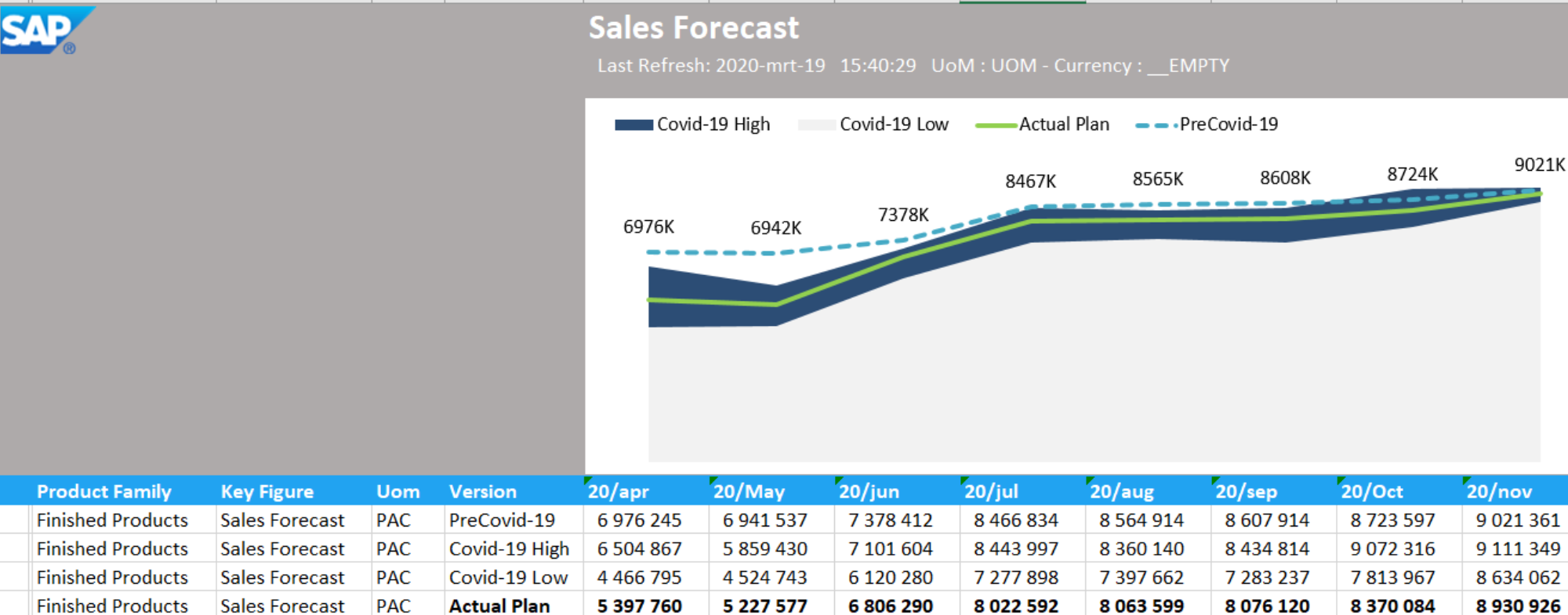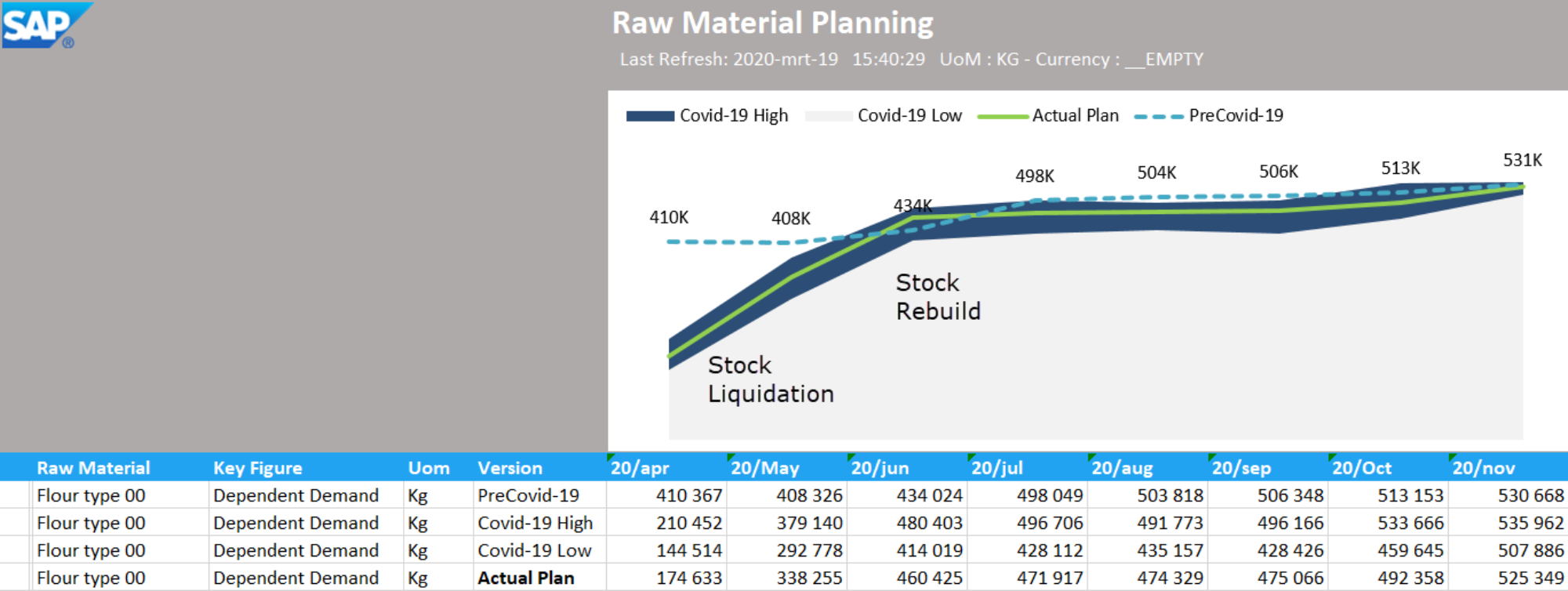/Blog_IBP_COVID-19-Website-720x360-(1).webp?mode=autocrop&w=320&h=320&attachmenthistoryguid=ca7031ba-9c06-4510-a761-23124a186b10&v=&c=c3d78c4465f994f174cc0d60a54bf03815b34cd89223d63ac730cc97ebeb7b52)
Supply chains are at risk: how to get the most out of your S&OP tool
- operations
- IT
- finance
- SAP
At this very moment, health care professionals are giving it their all to safeguard what matters most: our health. They deserve our utmost respect! In the meantime, as a manager, you are trying to protect another important aspect of society: our businesses. The next couple of months will be challenging. The coronavirus is already impacting supply chains, leading to disrupted sales, shipping delays, manufacturing hick-ups, pressure on resources…. Some companies will prove to be resilient, others will find it more difficult to recover. Being prepared is crucial. But where should you start?

